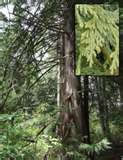
![]()
 A wood fence is the NATURAL choice for a beautiful addition to any yard. Wood is a renewable resource, where plastic, steel, and aluminum are not, making it the ecologically friendly choice of building materials. Manmade products are derived from materials taken from the earth than can never be replaced once they are removed. Plastics are made from petroleum reserves, steel and aluminum from mined ore. Wood grows from the earth, is harvested, made into useful products, and when its useful life has ended it can be returned to the earth. The forest industry practices today ensure that our forests are renewed and will be sustained indefinitely. 95% of each tree harvested goes into making useful products. The remaining 5% —- the branches — is left to biodegrade on the forest floor as rich compost for the next crop.
A wood fence is the NATURAL choice for a beautiful addition to any yard. Wood is a renewable resource, where plastic, steel, and aluminum are not, making it the ecologically friendly choice of building materials. Manmade products are derived from materials taken from the earth than can never be replaced once they are removed. Plastics are made from petroleum reserves, steel and aluminum from mined ore. Wood grows from the earth, is harvested, made into useful products, and when its useful life has ended it can be returned to the earth. The forest industry practices today ensure that our forests are renewed and will be sustained indefinitely. 95% of each tree harvested goes into making useful products. The remaining 5% —- the branches — is left to biodegrade on the forest floor as rich compost for the next crop.
We use only Western Red Cedar—Thuja Plicata—known for its natural beauty and outstanding physical properties. It is classified as a durable wood by North American building codes which permits its use in exterior applications without being chemically treated with preservatives. It contains its own natural preservative—tannin—which is toxic to the fungi that cause decay.
The very things mentioned above that make wood a desirable building material—natural, environmentally friendly—also mean that in outdoor use it probably will not last forever. (But neither will a car, a roof, a deck, etc. ) The useful life of a fence depends upon many factors. Decay is the natural enemy of wood used in the outdoors. While Western Red Cedar is naturally highly decay resistant, it is still susceptible to decay. It is impossible to predict with any certainty the actual life span of any natural product. The amount of decay resistance is variable between 2 different trees and even from lumber taken from the same tree dependent upon the conditions the tree endures during its live years. Decay causing fungi need 3 things to survive and thrive —oxygen, moisture, and a temperature range of 50 to 90 degrees. The posts of the fence are the component most likely to fail due to decay because of its proximity to the ground (where there is moisture, oxygen, and optimum temperature) We cannot control the amount of oxygen or the temperature in the outdoors. But there are things you can do to control the third element necessary for decay—moisture. Wood kept dry will never rot, and efforts should be taken to keep the fence posts dry. The amount of sunlight the fence receives, the drainage of the soil, how much the area is watered, the plantings around the fence, etc. are all factors that will affect the lifespan of a wood fence.
![]()
- Try to plan your fence in an area that drains fairly well - if you are doing lots of watering, make sure your fence has a chance to dry between waterings.
- Keep in mind that if the area is always very shady, it may be damp, leaving the material vulnerable to decay.
- Keep mulch and grass clippings away from the posts so they can dry. Your fence wil be more susceptibe to decay if you have leaves and dirt piled up against the wood.
- Be careful when weed whipping. The repeated action of a weed whip against a fence post can be just like a beaver cutting down a tree. You could be methodically cutting down your fence posts over a period of years of careless weed whipping.
With these things in mind, your wood fence should give you many years of beautiful, maintenance free service.
![]()
Cedar left unfinished will weather to an attractive siver-gray color. Some degree of weather protection will be offered, and the natural color of newly milled cedar can be retained by applying finishes that contain ultraviolet blockers, mildew inhibitors, and water repellants. If you prefer to modify the color for artchitectural purposes, use of a penetrating stain is recommended since it is not a coating that will blister or peel. Keep in mind that if you do choose to put a finish on your fence, the finish has a lifespan of 1-4 years and repeated applications will be necessary. If you do choose to apply a finish, cedar should NOT be left unfinished for 6 to 12 months as suggested by some finish manufacturers, according to the Forest Products Laboratory in Madison, WI.
